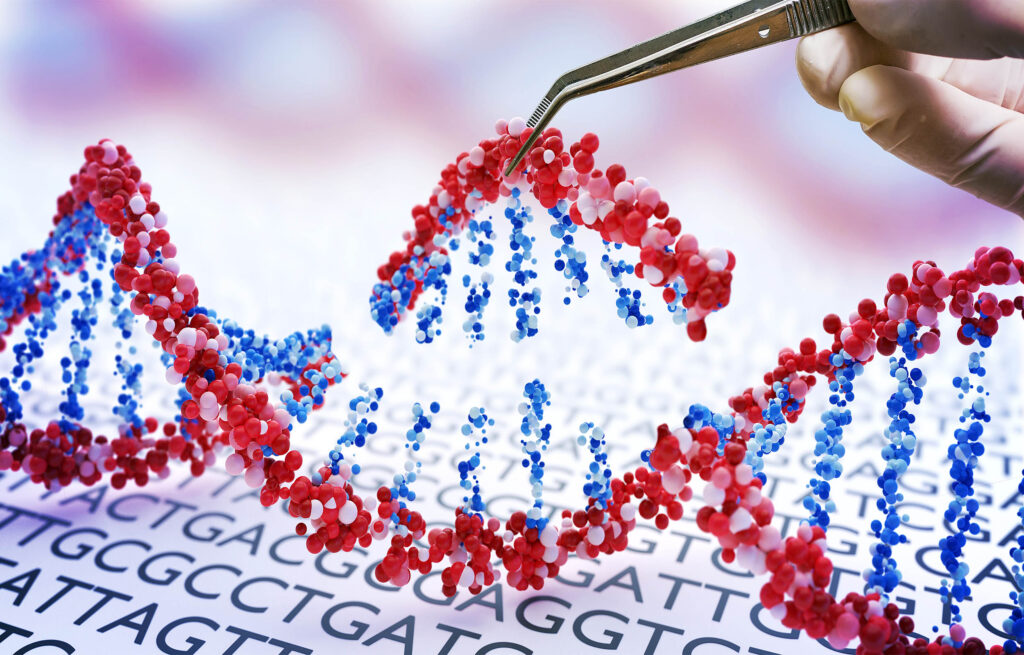
In a groundbreaking study, researchers from Mie University in Japan have successfully used CRISPR technology to remove the extra copy of chromosome 21 in cells affected by Down syndrome. This innovative approach, led by Ryotaro Hashizume and his team, marks a significant step towards addressing the genetic root of the condition, which affects approximately 1 in 700 newborns in the United States.
Down syndrome, also known as trisomy 21, is characterized by an additional chromosome that disrupts various bodily processes, leading to developmental differences, learning challenges, and distinct physical traits. The extra genetic material increases gene activity, causing cells to work overtime and altering protein production.
Understanding the Role of CRISPR in Down Syndrome
CRISPR-Cas9, a powerful gene-editing tool, has been employed to target and cut specific DNA sequences. This method, known as allele-specific editing, allows scientists to precisely remove the unwanted chromosome. According to the study, the removal of the surplus chromosome often normalized gene expression in laboratory-grown cells, bringing their behavior closer to typical function.
“Trisomic rescue via allele-specific multiple chromosome cleavage using CRISPR-Cas9 in trisomy 21 cells,” wrote Hashizume in the study, highlighting the potential of this technique.
The treated cells not only reverted to normal protein manufacturing patterns but also demonstrated improved survival rates in certain tests, suggesting a successful alleviation of the genetic burden.
Potential Implications for Neurological and Other Tissues
While the technique is still in its early stages and not yet ready for clinical use, the findings open doors to potential applications in brain cells and other tissues. The possibility of editing nondividing cells, which do not actively replicate after maturing, is particularly intriguing. This could mean broader applications for correcting genetic issues across different cell types in the body.
In follow-up experiments, researchers observed changes in gene activity post-chromosome removal. Genes related to nervous system development became more active, while those linked to metabolism were reduced. This shift could explain how correcting the chromosomal imbalance affects overall cell behavior and supports previous findings that extra copies of chromosome 21 disrupt brain development during early fetal growth.
Expanding the Research Beyond Stem Cells
The researchers extended their approach beyond lab-grown stem cells to skin fibroblasts, mature non-stem cells from individuals with Down syndrome. The method successfully removed the extra chromosome in a significant number of these cells, suggesting potential for broader applications in various cell types.
Post-removal, the corrected cells exhibited faster growth and a shorter doubling time compared to untreated trisomy cells. These changes indicate that eliminating the surplus chromosome may reduce biological stress, enhancing cell growth. Additionally, the cells produced fewer reactive oxygen species, harmful byproducts linked to cell damage and aging, pointing to improved mitochondrial function and overall cell health.
Challenges and Future Directions
Despite the promising results, challenges remain. Some CRISPR cuts can inadvertently affect healthy chromosomes. Researchers are refining their guidance molecules to ensure they target only the extra chromosome 21. They are also exploring ways to prevent the cell’s repair systems from reversing or misapplying the intended edits. With further refinement, the method could become safer and more efficient for a wide range of tissues.
If subsequent studies confirm these early findings, scientists could potentially develop therapies to address the genetic overload at its source. This approach could be particularly valuable in lab-grown tissues or stem cells for regenerative treatments. However, experts caution that these findings do not guarantee a straightforward path to therapy.
The project demonstrates that CRISPR can remove an entire chromosome rather than making small fixes, representing a significant leap in genome editing capabilities.
As researchers continue to analyze the risks of widespread DNA changes, they will also monitor the long-term behavior and health of these modified cells in real-world settings. The study, published in PNAS Nexus, underscores the potential of CRISPR in tackling fundamental genetic issues underlying common conditions.
For more groundbreaking news and updates, subscribe to our newsletter and explore EarthSnap, a free app by Eric Ralls and Earth.com.







